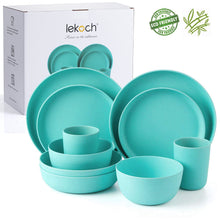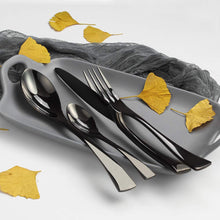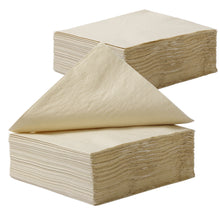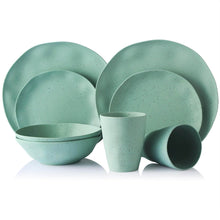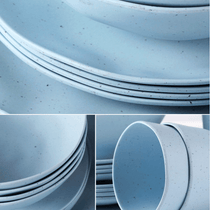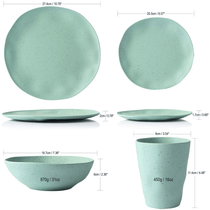Blog
Why should plastic straws be banned?
In general, plastic is one of the world's largest pollutants. Not only does it harm plants and animals on land and in the oceans, but it also hinders the economic development of many coastal areas, as well as posing a potential threat to human health.
You may have noticed all the recent news stories about plastic straws. Up to 91% of the plastic we use is not recycled and ends up in landfills or in the ocean.
Why Plastic straws?
Plastic straws are one of the most widely used products that people use on a daily basis. The global consumption of plastic straws is staggering, with approximately 500 million plastic straws being discarded every day in the United States alone, joining up to a total length that could circle the globe two and a half times. These plastic straws are frequently found in our daily lives. The lifespan of a plastic straw is only about 20 minutes, but because they are non-biodegradable, it takes about 200 years for them to naturally degrade into small molecules.
According to statistics, more than 8 million tonnes of plastic waste, including plastic straws, enters the oceans globally every year, causing serious impacts on marine life, fisheries and tourism and causing economic losses of US$8 billion. When plastic waste enters the ocean, it kills millions of seabirds, 100,000 marine mammals and untold numbers of fish every year. If we ignore the situation, by 2050 the weight of plastic litter in the oceans will exceed the total weight of fish.
The danger of plastic litter is not only to marine life, but also to human health. Through the accumulation of small plastic molecules in the food chain, they will eventually enter the human body and endanger our health.
How did this happen?
The plastic straw was not the first generation of straws. It started with cardboard straws, but once plastic production in the US increased, it was realised that it was quicker and cheaper to produce plastic straws. Since the 1960s, the plastic straw manufacturing industry has taken off.
Although convenient, plastic is not biodegradable - it cannot be broken down into compounds that can be easily reused. Because they are not biodegradable, they don't go anywhere.
What should we do?
Plastic has a major impact on our lives and there is an urgent need to reduce the use of plastic products, however, we have become so dependent on plastic straws in our daily lives that it is impossible to stop using them altogether, so we needed to find a product that could replace them completely.
The design department at Lekoch has been researching natural materials and experimenting with new ones to come up with a straw made of PLA - biodegradable straws.
PLA (polylactic acid) is a new type of biodegradable material. It is produced by using renewable plant resources (crops such as cassava and maize) to extract starch. The PLA starch raw material is saccharified to obtain glucose, which is then fermented by bacterial metabolism to produce high-purity lactic acid, which is then obtained by synthetic methods. The molecular weight polymerised lactic acid is then processed into a variety of biodegradable straws with good properties.
The PLA (polylactic acid)straws have good biodegradability, producing CO2 and H2O after degradation, without polluting the environment and meeting the needs of industrial composting. So it’s also compostable straws. The biodegradable straw extruded at high temperatures has good thermal stability and good solvent resistance. Its glossiness, transparency and feel can replace petroleum-based products. The physical and chemical indicators of the product can meet the food safety regulations of various places. requirements. Therefore, it has a wide range of applications and can basically meet the needs of most beverages on the market.
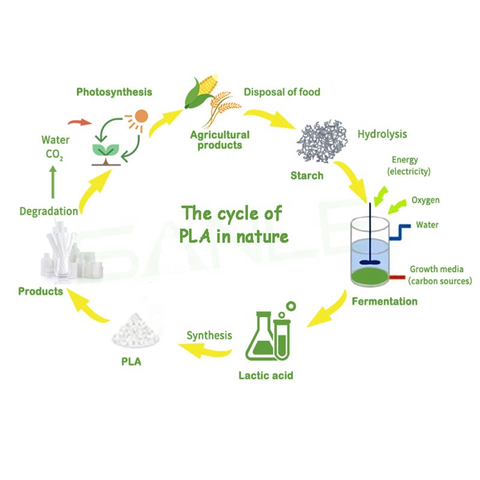
PLA straws are the perfect alternative to ordinary plastic.
- Disposable biodegradable Straws: Eco-friendly drinking straws, bendable, flexible, multi-coloured options. Not easily deformed. Ideal for everyday drinks such as juices, milkshakes, smoothies, ice coffee, cocktails. Also suitable for parties, weddings, picnics, restaurants, bars, etc.
- Compostable straws : The PLA Drinking straw raw materials come from nature and back to nature, no pollution, Plant-Based Compostable Straws made of corn starch material, Promoting Sustainable development of the earth’s ecology.
- The Best Alternative: Compared to disposable straws made of wheat,
paper etc., this PLA straws are sturdy, bendble and more convenient. These biodegradable straws will neither become soggy nor disintegrate into your drink.
How to distinguish PLA straws from ordinary plastic straws.
- Smell: In their natural state, PLA straws are made from plant material and have a plant smell. Plastic straws can have a pungent smell. When burned, PLA straws do not produce the same pungent chemical burning smell as plastic straws
- Due to the high density of the raw material used in PLA straws, they will sink to the bottom of the glass when cut and stirred, while ordinary plastic straws will float to the surface.
So while straws are a small starting point, a campaign like the plastic straw ban will lead to a discussion about waste management and pollution. This campaign could help people become more aware of the impact of everyday plastic products on the sustainability of the planet. In turn, this will hopefully help us make progress in reducing the amount of plastic waste in the world.



